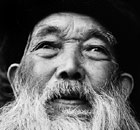Global General
H1N1 linked to 1918 virus
By Maggie Fox (China Daily)
Updated: 2010-03-26 07:38
 |
Large Medium Small |
WASHINGTON - The H1N1 swine flu virus may have been new to humanity in many ways but in one key feature its closest relative was the 1918 pandemic virus, researchers reported on Wednesday.
Their findings could point to better ways to design vaccines and help explain why the swine flu pandemic largely spared the elderly.
| ||||
Two studies show an important structure called hemagglutinin is very similar in both the swine flu H1N1 and its distant cousin, the H1N1 virus that caused the 1918 pandemic. Hemagglutinin is used by viruses to infect cells and gives influenza viruses the "H" in their designations.
For one study, published in Science Translational Medicine, Chih-Jen Wei, Gary Nabel and colleagues at NIAID injected mice with a vaccine made using the 1918 influenza virus - which killed an estimated 40 million to 100 million people.
When they infected the mice with H1N1 swine flu, the vaccinated mice survived, while many unprotected mice died.
The reverse also worked - when they immunized mice using the 2009 H1N1 virus, and then infected them with the 1918 strain, the mice were protected.
"This is a surprising result," Nabel said. "We wouldn't have expected that cross-reactive antibodies would be generated against viruses separated by so many years."
The team also showed that as flu viruses circulate, they develop a kind of shield called a glycan that protects them from the body's immune system. That may allow them to become regular, seasonal visitors.
"It gives us a new understanding of how pandemic viruses evolve into seasonal strains, and, importantly, provides direction for developing vaccines to slow or prevent that transformation," Fauci said.
Better vaccines
Researchers are trying to devise better flu vaccines. Flu viruses shift slightly throughout the year and for full protection, people must be vaccinated with a fresh formulation each year.
The new findings may help in designing so-called universal vaccines that protect against all strains of influenza. Or they could mean that revaccinating young people with older vaccines could protect them from the re-emergence of decades-old strains.
For the other study, published in Science, Ian Wilson of the Scripps Research Institute in California and colleagues crystallized the hemagglutinin structures of both the 1918 and 2009 H1N1 viruses to get images of them.
"Parts of the 2009 virus are remarkably similar to human H1N1 viruses circulating in the early 20th century," Wilson said. "Our findings provide strong evidence that exposure to earlier viruses has helped to provide some people with immunity to the recent influenza pandemic."
Throughout the recent pandemic, researchers noticed that people over 50 were less likely to be infected or suffer as serious symptoms as in regular flu seasons, which hit the elderly hardest.
Reuters










